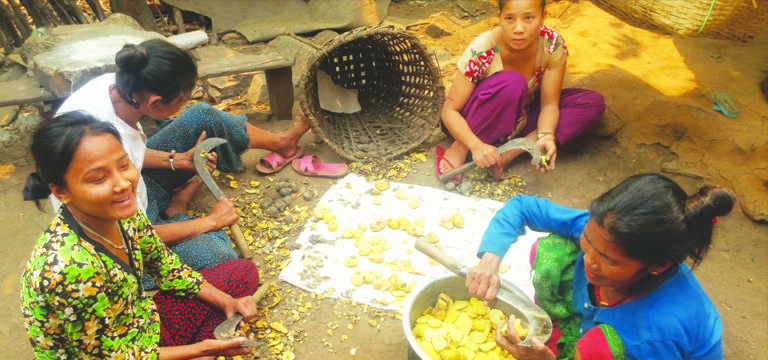
Chepang villages in western parts of Makwanpur district are facing acute shortage of food.
Food produced in the sloppy fields in the hills could meet the demand of maximum six months and for the rest of the time, people of the villages used to go to other places to work and earn money which was used to buy food and other essential goods.
But this year, COVID-19 affected their work in agriculture and other labour-intensive sectors which has increased challenge to arrange food for them, said Chepang leaders.
Raksirang, Kailash, Manahari and Bhimphedi Rural Municipality, and Hetaunda Sub Metropolitan City have major Chepang settlements. They live in the areas near the forest.
According to former Central President of Nepal Chepang Association and Member of the Constitution Assembly Gobinda Ram Chepang, people are forced to stay in their home after the implementation of the lockdown. The households have run out of foods and are relying on wild tubers (Gittha) and Indian butter fruit (Chiuri) to survive.
He said that people are using the lockdown period to make trips to jungles and search wild tubers and Indian butter fruit.
As the season of Chiuri arrived, many families are feeling relief as they can manage some food, said Member of Bagmati Provincial Assembly Santa Bahadur Chepang. “The second lot of Chiuri starts to ripen from the third week of June. The wild fruits and tubers have given people a great relief during the time of food shortage,” he said.
Chairman of Raksirang Rajkumar Malla said that Chepang had begun to get the opportunity for labour and sell their agricultural products after the villages were connected with road facility, but the COVID-19 pandemic had added fresh challenges to them.
Meanwhile, Raksirang Rural Municipality has urged donors and other agencies to provide relief to the people in the villages.
Malla publicly appealed to people and agencies to send necessary support to Chepang as they are facing challenge to manage even their daily needs.
According to 2011 census, Makwanpur has 23,000 Chepang population but Association said that the actual number is about 40,000.
Source : THE RISING NEPAL,






